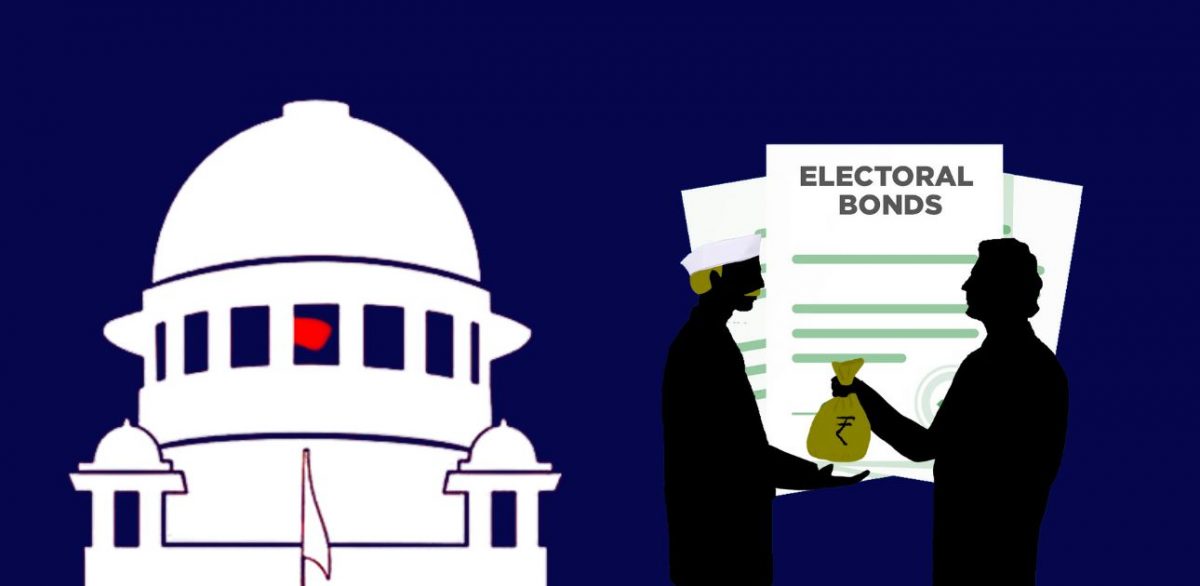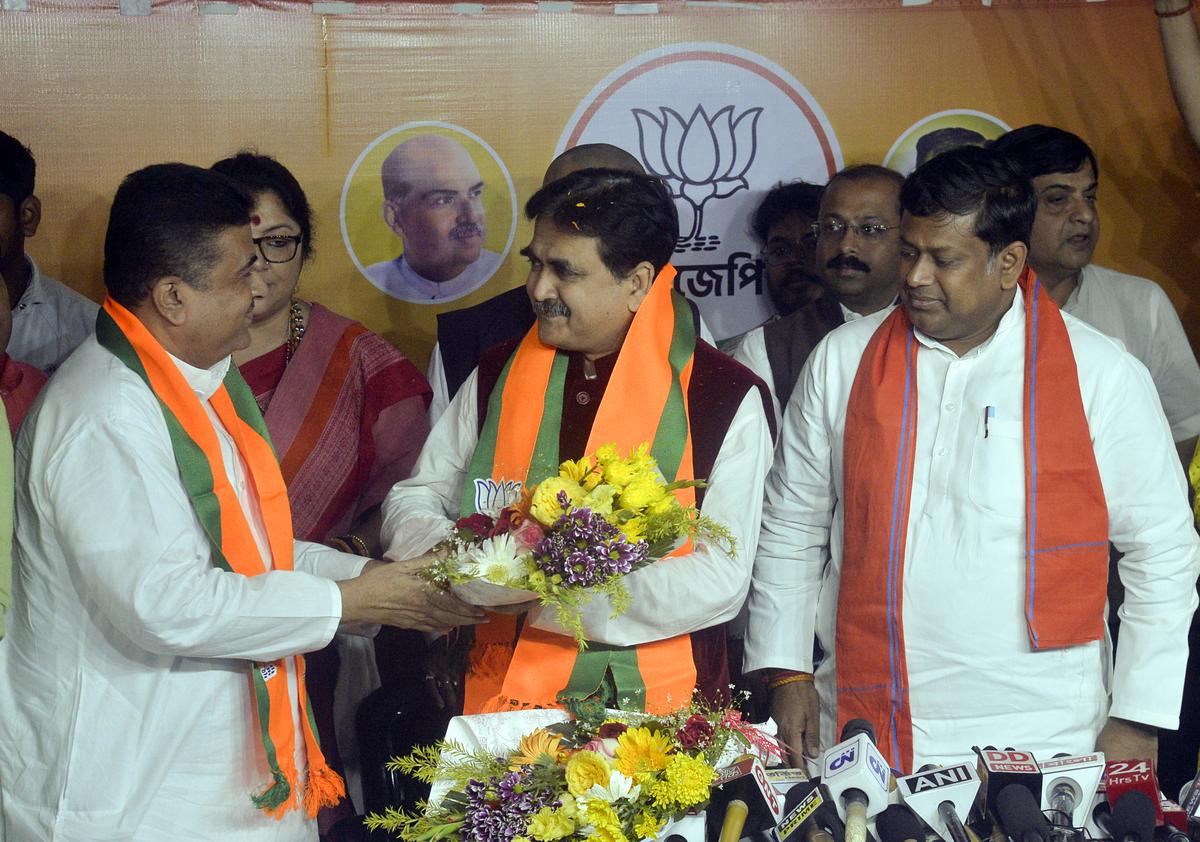Why in news?
- Recently a Calcutta High Court judge and a senior IPS officer in West Bengal resigned from their posts and joined political parties. This has brought up concerns about whether it’s right for constitutional authorities and government officials to join political parties after they leave their jobs.
What’s in today’s article?
- Constitutional restrictions
- Restrictions on gaining the political posts
- Various recommendations and cooling off period
- Argument against cooling off period
Existing Constitutional restrictions
- Rationale – principle of checks and balance
- The Constitution works on the principle of checks and balance between various organs. The executive is accountable to the legislature.
- An independent judiciary keeps a check on both these branches of the State.
- There are also other independent bodies like the Election Commission, Public Service Commission, CAG who are required to perform their constitutional duties without any interference from the government.
- The independence of these institutions is ensured through guaranteeing fixed tenure, financial independence, stringent removal procedure and restrictions after demitting office.
- Existing constitutional restrictions
- A judge of a Supreme Court after ceasing to hold office cannot appear as a lawyer before any court or authority in India.
- A judge of a High Court has similar restrictions except for appearance before the Supreme Court or other High Courts.
- The CAG and the chairman/members of the Public Service Commission cannot take up any other employment with Central or State governments after demitting office.
- These restrictions are laid down to avoid favouritism, during the period of holding such positions, towards the government in power with an intent of securing any post-retirement benefit.
Restrictions on gaining political posts
- No such restrictions
- There are no restrictions when it comes to joining political parties, contesting elections or being nominated to certain posts.
- There are notable instances of persons who held independent constitutional posts and later went on to join politics or were nominated to various posts.
- Examples
- There have been two Supreme Court judges in 1967 and 1983, who resigned from their posts to contest the presidential and parliamentary elections from Assam, respectively.
- Another Supreme Court judge joined a political party in Tamil Nadu and contested elections five years after his retirement in 1999.
- A former Chief Election Commissioner became a Rajya Sabha member and Minister in 2004, three years after his retirement.
- Recently, a retired Chief Justice of India was nominated to the Rajya Sabha in 2020 within four months of his retirement.
- There have also been occasions where retired CAG and judges have been appointed as Governors of States.
- Numerous bureaucrats have also joined political parties and contested elections after resigning from service or soon after their retirement.
Various recommendations and cooling off period
- The Election Commission (EC) had in 2012 recommended to the Union government to provide for a cooling-off period for top bureaucrats after their retirement before they could join political parties and contest elections.
- However, the Government had rejected this recommendation based on the opinion of the Attorney General that this may not be in line with constitutional provisions and democratic values.
- The Supreme Court had dismissed a writ petition in May 2022 that sought a direction from the top court to the legislature to frame a law imposing a cooling-off period for retired bureaucrats before joining politics.
- The court observed that it is for the legislature to determine whether a cooling-off period is required for bureaucrats before they join politics after retirement.
Arguments against the colling off period
- One of the essential features of a democracy is every citizen’s right to contest elections.
- The Attorney General while providing his opinion against the 2012 recommendation of EC had said that maintenance of independence and neutrality will be relevant during the period a person is in service.
- There are rules at present which restrict a senior bureaucrat from joining a private job for at least one year after he or she retires from government service.
- Such restriction for commercial employment is based on intelligible differentia to avoid conflicts of interest.
- However, such a restriction against officials contesting polls may not be a valid classification and would not be in harmony with democratic principles in the Constitution.
Conclusion
- Justice should not only be done but should also be seen to be done. This applies equally to judges, independent constitutional authorities and senior bureaucrats. Extending this principle even after they demit office will have a salutary effect. This may be achieved by prescribing a cooling-off period for joining political parties or being nominated to political posts by the government. This will instil confidence in the public at large and negate any allegation of quid pro quo.
Pradhan Mantri Samajik Utthan and Rozgar Adharit Jankalyan (PM-SURAJ)
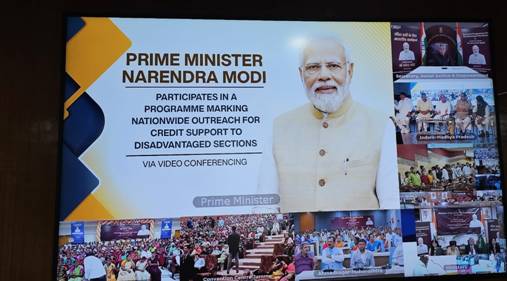
Why in news?
- PM Modi launched the Pradhan Mantri Samajik Utthan evam Rozgar Adharit Jankalyan (PM-SURAJ) portal for credit support to entrepreneurs from disadvantaged sections of society virtually.
- The PM also distributed Ayushman Health Cards, and Personal Protective Equipment to Safai Mitras under the National Action for Mechanised Sanitation Ecosystem (NAMASTE) scheme.
What’s in today’s article?
- Pradhan Mantri Samajik Utthan evam Rozgar Adharit Jankalyan (PM-SURAJ) portal
- National Action for Mechanised Sanitation Ecosystem (NAMASTE) scheme
Pradhan Mantri Samajik Utthan evam Rozgar Adharit Jankalyan (PM-SURAJ) portal
- About
- The portal will act as a one-stop point where people from disadvantaged sections of society can apply for and monitor the progress of all loan and credit schemes already available to them.
- This initiative will help in providing financial assistance directly to beneficiaries, eliminating middlemen and commissions.
- It aims at uplifting the most marginalised segments of society.
- Implementing agency: Ministry of Social Justice and Empowerment and its departments.
- Previous efforts
- To achieve the goal of Viksit Bharat by 2047 , it is necessary to ensure that facilities available to others like gas connection, bank accounts & toilets are available to Dalits, backwards, deprived and tribals.
- The Government is making all possible efforts to empower the SC, ST and OBC communities.
- The assistance provided to them by various institutions has been doubled in the last 10 years.
- The government has provided almost one lakh 60 thousand crore rupees for the welfare of the SC community this year alone.
- Other measures include:
- reservation of 27% seats for the OBC in the all-India quota of medical seats,
- greater opportunities for OBC students in NEET examinations,
- support through the National Overseas Scholarship for underprivileged students pursuing Master and PhD degrees abroad.
- Keeping in mind the entrepreneurship among Dalits, the government has launched the Ambedkar Social Innovation and Incubation Mission.
NAMASTE (National Action for Mechanised Sanitation Ecosystem) Scheme
- Objective
- To ensure safety and dignity of sanitation workers in urban India as well as providing sustainable livelihood to these workers.
- Ministries involved
- It is a joint initiative of the Ministry of Social Justice & Empowerment (MoSJE) and the Ministry of Housing and Urban Affairs (MoHUA).
- Implementing agency
- National Safai Karamchari Financial Development Corporation (NSKFDC)
- Coverage
- Five hundred cities (converging with AMRUT cities) will be taken up under this phase of NAMASTE. It will be implemented for the period 2022-26.
- Aims
- Zero fatalities in sanitation work in India
- All sanitation work is performed by skilled workers
- No sanitation workers come in direct contact with human faecal matter
- Sanitation workers are collectivized into SHGs and are empowered to run sanitation enterprises
- All Sewer and Septic tank sanitation workers (SSWs) have access to alternative livelihoods
- Components of the scheme
- Extending Insurance Scheme Benefits
- These workers and their families will be covered under the Ayushyaman Bharat- Pradhan Mantri Jan Arogya Yojana (AB-PMJAY).
- The premium for AB-PMJAY for those identified SSWs families who are not covered earlier shall be borne under NAMASTE.
- Livelihood Assistance
- The Action Plan will promote mechanization and enterprise development.
- Identified SSWs and their dependants will be given counselling on available livelihood choices and an opportunity to acquire alternative skills, if they so desire.
- An SSW may choose to continue working in the sanitation sector, thereby becoming eligible for receiving capacity building training.
- Alternatively, the worker may choose to explore an alternative livelihood option or an entrepreneurial venture.
- The identified SSWs and their family members will be extended benefits of all the social security schemes.
- Other assistance
- Capital subsidies of up to ₹5 lakh on sanitation machinery costing up to ₹15 lakh and interest subsidies on loans.
- Interest rates will be capped between 4-6% for the beneficiaries.
- The scheme also provides for training the workers in the use of these machines, during which time a stipend of up to ₹3,000 per month will be provided.
India’s First Indigenous Fast Breeder Reactor begins ‘Core Loading’
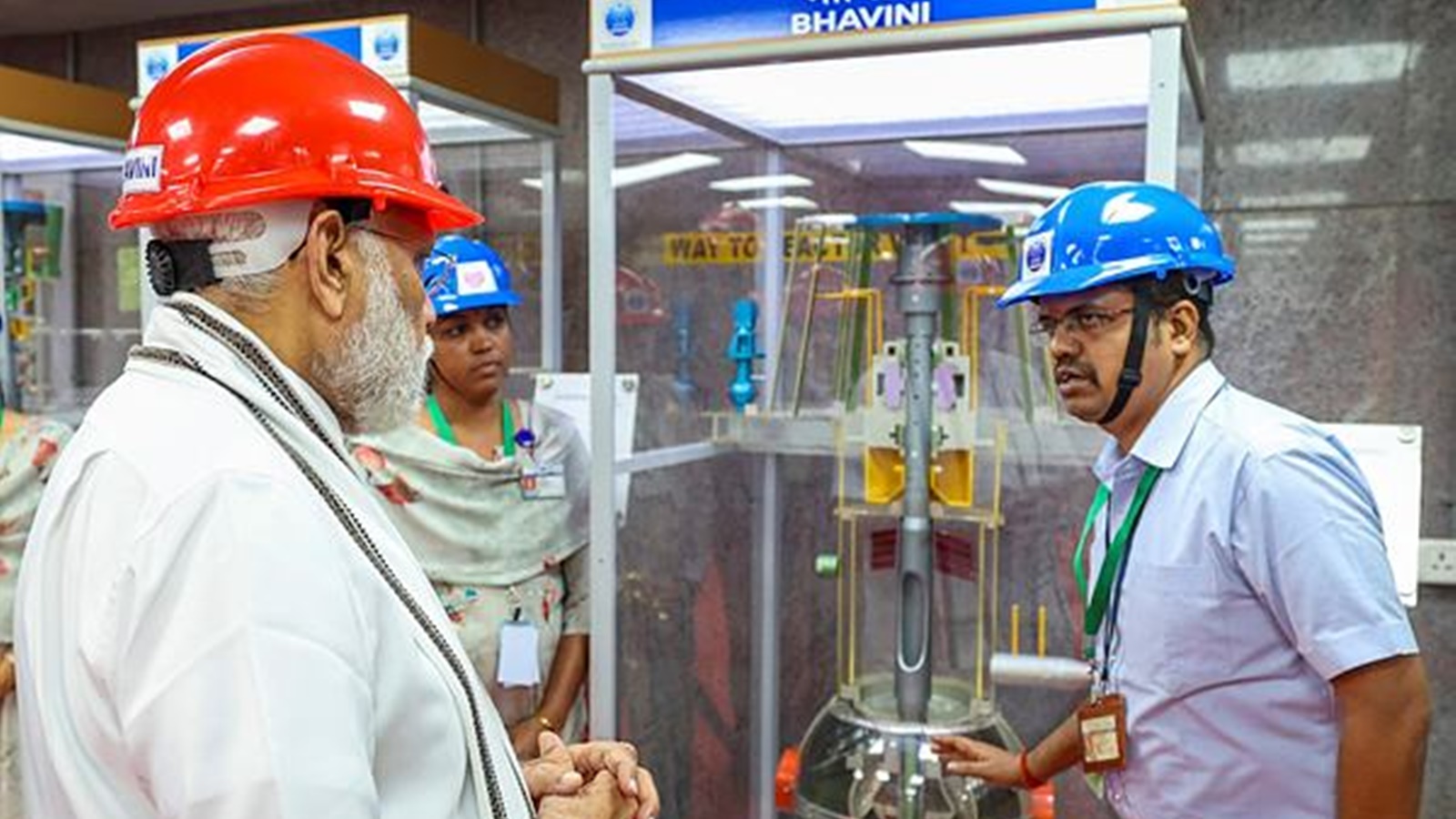
Why in the News?
- The vital second stage of India’s three-stage nuclear programme got a boost with the commencement of ‘core loading’ at the country’s first indigenous Fast Breeder Reactor (FBR) at Kalpakkam, Tamil Nadu, earlier this month.
What’s in Today’s Article?
- Core Loading and its Significance
- India’s 3-Stage Nuclear Programme (History, 3-Stages, Significance, etc.)
Core Loading:
- About
- In a nuclear reactor, core loading is the process of loading nuclear fuel assemblies into the reactor core.
- The fuel assemblies comprise fuel rods that contain fissile material, such as enriched uranium or plutonium, which undergoes nuclear fission to produce heat.
- And a fast breeder reactor is a type of nuclear reactor that is designed to produce more fissile material (such as Plutonium-239) than it consumes during operation.
- It achieves this by using fast neutrons to convert non-fissile isotopes (such as Uranium-238) into fissile isotopes (such as Plutonium-239).
- This process is known as “breeding” because it creates more fissile material than is initially loaded into the reactor.
- Capacity of PFBR in Tamil Nadu
- India’s prototype fast breeder reactor (PFBR) in Tamil Nadu has a capacity of 500 Megawatt electric (MWe).
- It was designed by the Indira Gandhi Centre for Atomic Research and constructed by BHAVINI.
- Short for Bharatiya Nabhikiya Vidyut Nigam Limited, BHAVINI was established in 2003 to build and operate the PFBR.
- Significance
- PFBR is considered a precursor to future fast breeder reactors (FBRs).
- After the core loading is completed, the Kalpakkam PFBR reactor will undergo the first approach to criticality, leading to power generation.
- Once it becomes operational, India will be only the second country after Russia to have a commercial operating fast breeder reactor.
- The latest development symbolises India’s entry into the crucial second stage of the country’s three-stage nuclear programme.
India’s 3-Stage Nuclear Programme:
- India’s three-stage nuclear power programme was formulated by Dr Homi Bhabha to secure the country’s long term energy independence.
- The ultimate focus of the programme is on enabling the thorium reserves of India to be utilised in meeting the country’s energy requirements.
- Thorium is particularly attractive for India, as India has only around 1–2% of the global uranium reserves, but one of the largest shares of global thorium reserves at about 25% of the world’s known thorium reserves.
- Thorium is found in the monazite sands of coastal regions of South India.
- Dr Homi Bhabha, therefore, devised a three-stage nuclear power programme to make the most of India’s limited uranium reserves and abundant thorium reserves.
- Each stage of the programme has fuel cycle linkages.
- This means that spent fuel from one stage is reprocessed to obtain fuel for the next stage — there is little to no wastage.
- Ultimately, the goal is to generate nuclear power while ensuring long-term energy security.
3-Stages of India’s Nuclear Programme:
- The three stages are:
- Pressurised heavy water reactors (PHWRs) using natural uranium as fuel:
- The first stage involves using natural uranium in PHWRs to multiply domestically available fissile resources.
- Natural uranium consists of 0.7 per cent Uranium-235, which undergoes fission to release energy.
- The remaining 99.3 per cent is Uranium-238, which is not fissile but can be converted into the fissile element Plutonium-239 in a nuclear reactor.
- FBRs using plutonium as fuel:
- In the second stage, plutonium from the spent fuel of PHWRs is used in FBRs, such as the one at Kalpakkam which saw the initiation of core loading on 4 March.
- FBRs are fuelled by a mixed oxide of Uranium-238 and Plutonium-239, which is recovered by reprocessing the spent fuel from the first stage.
- In FBRs, Plutonium-239 undergoes fission, producing energy and more Plutonium-239 through the transmutation of Uranium-238.
- This process allows FBRs to produce energy and additional fuel, which is why they are termed “breeders.” FBRs generate more fuel than they consume.
- Over time, a stockpile of plutonium can be built up by introducing Uranium-238 into the reactor.
- Advanced reactors using Uranium-233 as fuel in a thorium-uranium cycle:
- Once enough nuclear capacity is built, the third stage will involve using thorium, which will be converted into Uranium-233 in FBRs.
- Thorium-232, which is abundant in India, is not fissile. Therefore, it needs to be converted into a fissile material, Uranium-233, through transmutation in an FBR.
- Significant commercial use of thorium can only begin when there are abundant supplies of either Uranium-233 or plutonium.
- The conversion from thorium to uranium is planned to be achieved in the second stage of the programme, which involves the commercial operation of FBRs.
When Will India Achieve 3 Stages of the Nuclear Programme?
- The third stage, utilising thorium as an energy source, is expected to be reached in a few decades.
- To prepare for the use of thorium in the third stage of the programme, efforts are currently underway to develop and demonstrate the necessary technology.
- This is being done so that a mature technology for thorium utilisation will be ready in time.
- The Bhabha Atomic Research Centre is developing a 300 MWe advanced heavy water reactor (AHWR).
- The AHWR is an innovative concept that serves as a bridge between the first and third stages of the nuclear programme.
- It aims to advance thorium utilisation without going through the second stage.
Significance of Nuclear Energy Generated through 3-Stage Programme:
- Just like with uranium, generating electricity from thorium produces no greenhouse gases, making it a clean energy source.
- Thorium reactors are also more cost-effective than conventional reactors.
- Nobel laureate Carlo Rubbia estimates that a tonne of thorium could produce as much energy as 200 tonnes of uranium or 4 million tonnes of coal. As a result, far less nuclear waste is generated.
- Importantly, the waste from thorium reactors contains no isotopes with a half-life beyond 35 years, significantly reducing the required storage time.
- Harnessing thorium for India’s energy needs presents many economic opportunities.
- The availability of affordable electricity could drive a transition away from gas, petrol, and diesel for cooking and transportation.
- Additionally, nuclear energy could alleviate the pressure on the railways by reducing the need to transport millions of tons of coal, potentially reducing the necessity for service expansion.
- The three-stage nuclear programme is expected to make India completely self-sufficient in nuclear energy.
Boosting Exports from MSMEs in India

Why in News?
- Recently, the Niti Aayog has released a report on boosting exports from Micro, Small and Medium Enterprises (MSMEs).
- According to the report, the government must make it easier for smaller firms to export their goods through e-commerce platforms, establish a single national trade portal for all approvals and compliances, etc.
What’s in Today’s Article?
- MSMEs in India
- Exports from MSMEs in India
- NITI Aayog Recommendations to Boost MSME Exports from India
MSMEs in India:
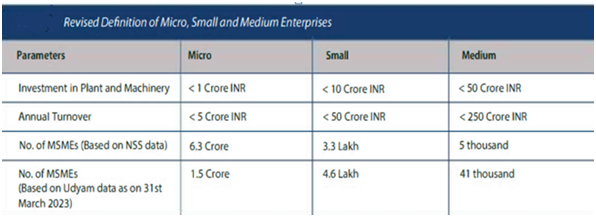
- MSMEs are often called the powerhouse of the Indian economy as they contribute significantly to employment generation, exports, and overall economic growth.
- They reportedly account for more than 11 crore jobs and contribute around 27.0% of India’s GDP.
- The sector consists of around 6.4 crore MSMEs, with 1.5 crore of them registered on the Udyam portal and employs around 23.0% of the Indian labour force, making it the 2nd-largest employer in India after agriculture.
- They account for 38.4% of the total manufacturing output and contribute 45.03% of the country’s total exports.
Exports from MSMEs in India:
- Exports represent an enormous and under-utilised opportunity for the MSME sector. Sectors where Indian MSMEs can participate and compete in export markets include –
- Handicrafts, handloom textiles, ayurveda and herbal supplements, leather goods, imitation jewellery and wooden products.
- Globally, these sectors constitute substantial markets exceeding USD 340 billion, whereas their domestic market is considerably smaller.
- Over time, small firms have encountered difficulties in tapping into export markets due to the inherent obstacles posed by economies of scale.
- It proves more challenging for small enterprises to –
- Enter foreign markets,
- Adhere to compliance requirements,
- Achieve cost-effective production, and
- Efficiently manage logistics for clients.
NITI Aayog Recommendations to Boost MSME Exports from India:
- Create One Stop Information Channel for Exporters:
- India has several portals that help exporters access information, most of which offer incomplete or outdated information.
- Therefore, creating a one stop information data intelligence portal using Al based interface will be essential to impart information to MSMEs.
- Create National Trade Network (NTN) as Comprehensive Trade Portal:
- Currently an exporter needs to navigate multiple portals to get necessary approvals. This includes the documentation for licences, etc.
- This difficulty can be eliminated by creating an end-to-end NTN which will provide seamless experience to exporters including answering queries and resolution of any gaps in paperwork.
- Promote E-commerce Exports:
- While China exported $200 billion worth of goods through e-commerce in 2022, India exported only $2 billion.
- A key reason for this gap is the cumbersome compliance process associated with exports, especially when it comes to payment reconciliation, which is particularly challenging for new or small exporters.
- To boost e-commerce exports, it is essential to create distinction between Exporter on Record (EOR) and Seller on Record (SOR), exempt import duties on rejects/ returns, etc.
- Promote Ease of Merchandise Exports:
- While the government has placed high emphasis on improving Ease of Doing Business, it should be extended to export processes, particularly targeted at MSME exporters.
- For example, MSMEs can be offered relaxation from certain compliance requirements for a period and forgiven on errors as they begin to learn requirements of export markets.
- Improve Access to Export Finance: Access to finance is regularly seen as a key bottleneck for MSMEs. Towards this end, promotion of Export Credit Guarantee can help improve working capital availability for MSMEs.
- Ensure Accurate Measurement:
- Currently, a dependable single data source for MSME exports is lacking.
- Establishing a reliable depiction of MSME exports involves integrating DGFT trade data with GST and income tax data.
- This fusion of datasets, utilising PAN numbers as the common identifier, will provide an accurate portrayal of MSME exports.

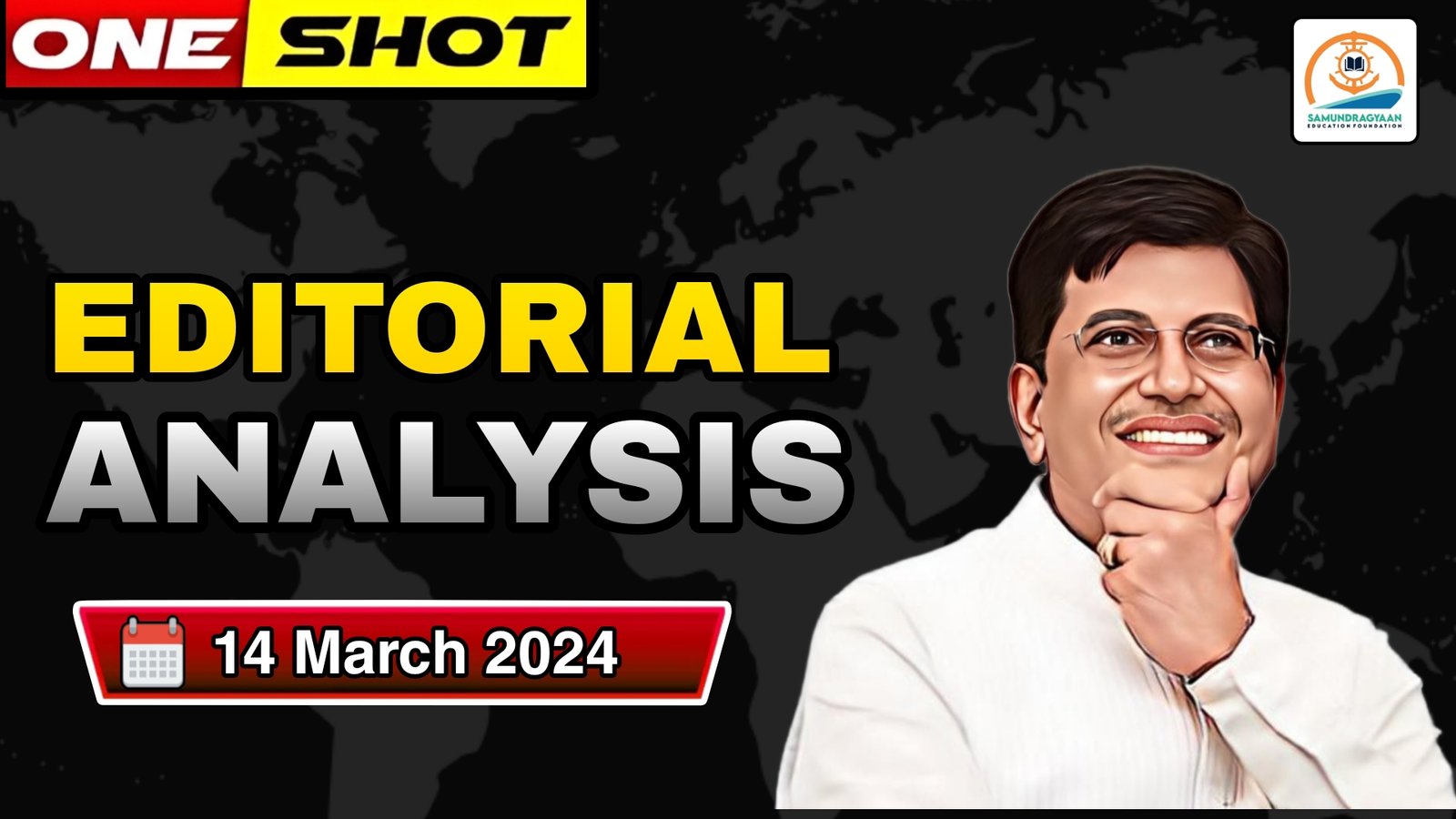





)

